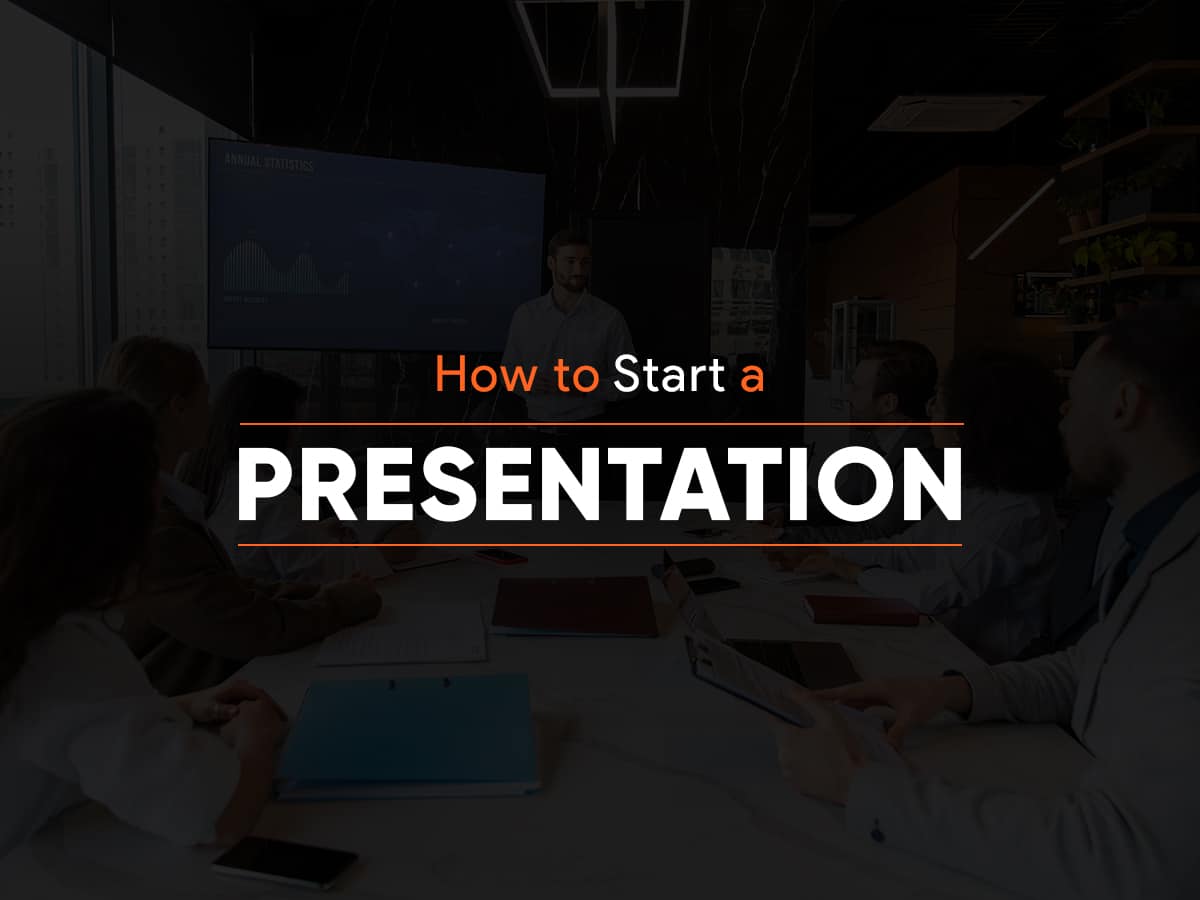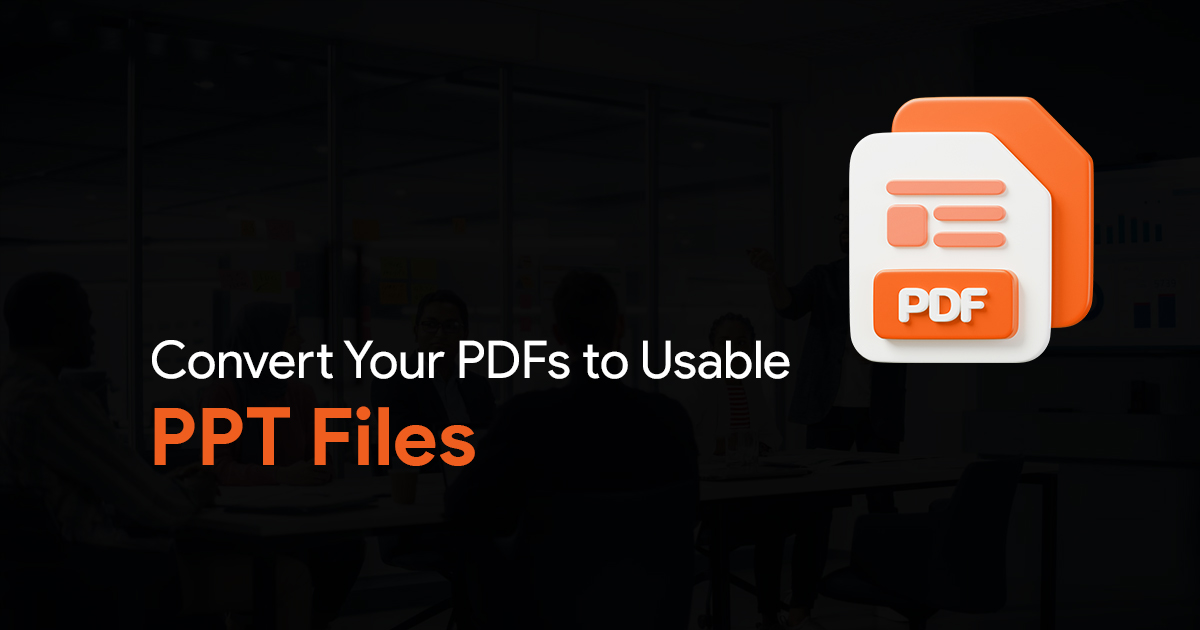How to Start a Presentation

How often have you sat in a conference room or auditorium feeling absolutely disconnected from what is happening on stage? How often have you spoken to an audience with increasing discomfort and seen your audience shifting in their seats or glancing at their watches frequently? Most of us have experienced either one or the other, and some of us, both. But all of this can be solved if you know how to start a presentation well enough.
A speaker has just a few minutes to grab the attention of their listeners. It is absolutely imperative that you start strong, and make it interesting right at the outset. This applies to both speeches and PowerPoint presentations. All your hours of research and preparation can simply go down the drain if you fail to capture the audience’s attention when you start.
So how will you do that? How to start a presentation in a manner that has the audience hooked on your words and wanting to hear more? Regardless of whether you are going to give a speech, or let a PowerPoint presentation do most of your work, there are certain things you need to remember.
How to Start a Presentation Strongly
Confidence is Key
You need to exude confidence. After all, if you don’t believe in yourself, how do you expect the audience to do so? I get it, public speaking is not everyone’s cup of tea. Many of us don’t enjoy being the center of attraction. You may think that it’s easy to say, but not everyone has the confidence naturally!
So, what then?
There are three things you need to do: practice, practice, and more practice. Use a mirror, friends, family – whatever works for you. At first, you could talk about everyday things, and then move on to your actual speech, if you are too tense to start with it.
Look the Part
Everyone’s eyes are going to be on you. They MUST be on you; if you want to make a successful presentation. Ergo, it is crucial that you look like you are THE person for the task. It is important to be well groomed and well dressed – and no, that does not mean expensive. It means you must be presentable. Nobody is going to take you seriously if you turn up in casual clothes and disheveled hair – unless you’re Ed Sheeran.
Smile
We underestimate the power of this simple action. A smile can help bridge the distance between you and your audience. A smile actually makes your voice more pleasant to the listener and makes you look approachable too. You will feel calmer and more confident and connected with your audience as well.
Know your Audience
This is another essential factor. When you know the type of people you are going to address, what interests them, what they enjoy, and so on, you will know what will get their attention. For example, making references to the Beatles or Nadia Comaneci may draw blank stares from an audience of millennials; talk about anime to an audience in their 60s, same reaction. Knowing the audience properly is the key to knowing how to hook them.
Tips on How to Start a Presentation
How to start a presentation speech and how to start a PowerPoint presentation are not vastly different. The main difference is likely to be that you are addressing a smaller audience for the latter. Most of what is mentioned below hold true for both types of presentations. However, it is true that some methods may be more effective for speeches, and some others for PowerPoint presentations.
Emotional Pull
On September 11, 1893, at the first World’s Parliament of Religions, Swami Vivekananda, one of India’s greatest spiritual leaders, began his speech with these words: ‘Sisters and Brothers of America’. The audience hung on to his every word – nobody had addressed them this way before. It touched their hearts, and they flocked to his side after he finished speaking, wanting to know more. Appealing to their emotional side is a great way to get the audience on your side.
Shock Them
Shock value always garners attention, good or bad. The trick is to know what will shock your audience. There are several ways of doing this: you can show images or videos, play a voice clip, directly talk to someone in the audience, or poke fun at something; basically, pull them out of their comfort zone and force them to pay attention! Whatever it is you decide to do, make sure that it interests them, gets their attention, and has them wanting to remain with you. It goes without saying, that whatever material you use to shock your audience must be relevant to your presentation.
Get Them Thinking
Often, people attend presentations thinking they only have a passive role to play: just sit and listen to the speaker or watch the slides on the screen. Shake them out of their reverie, and push them to think. This can be achieved by asking them to visualize something and use their imagination.
For example, let’s say the topic of your presentation is ‘How to Deal with Children with Disruptive Behaviors’. You can ask the audience to imagine themselves in their childhood, and think of an occasion where they go into trouble with their parents or teachers. Now, this is something almost everyone is likely to have gone through, and they will start thinking of that. They are now involved in what you have to say, and want to know more.
Pepper your Speech with Humor
Unless you are talking about a tragic event, using humor will always help you catch the audience’s attention. Starting with a humorous anecdote is a great ice breaker, and brings you closer to your listeners. It is a good idea to inject some humor into your presentation a couple of times. But don’t overdo it, or you could come across as flippant. Of course, you need to be very confident to start with a joke.
One of the best things to do is poke fun at yourself. An overweight presenter I knew went on stage walking tenderly and exclaimed, ‘Okay, this stage is strong enough to bear my weight’. Everyone loves someone who can be self-deprecating.
Start with a Bang
Are you certain that what you speak and present is going to be impactful, and add value to your listeners? If so, state that, boldly, and confidently. Make a claim at the outset for maximum impact, and make your audience realize what they have to gain.
Let us consider that you are a Financial Advisor and have to make a presentation about Financial Literacy. You know that you have information that will help your audience immensely. Make a bold impact with the first few opening lines.
A good statement would go something like this: ‘I’m extremely pleased to see such a large number of people who are interested in taking control of their finances, and consequently, their lives. I am happy to share information that I am confident will help you make improved financial decisions whether it comes to saving or investment, and help you lead a debt free life. You’ll also be able to go on that dream vacation, buy your dream car or the house you want.’ This has the dual effect of making them feel that they are going to be in control of their lives, and that they can be better off in life. They will definitely listen.
Be Contradictory
When you make a statement that contradicts what the audience is expecting, it gives them a jolt. They are definitely going to wonder, ‘What’s going on?’ Their interest is piqued, and they are going to want to know what will happen next.
For example, let us assume you are going to talk or present about artificial intelligence. You get onto the stage or the front of the room, and make a statement like: ‘Well, artificial intelligence – I haven’t got any; all of my intelligence is natural. And since the machines are going to take over one day anyway, perhaps it’s best that we just wind up and leave, and enjoy what’s left of the days of human supremacy?’ This, of course, is also humor and shock value, but is a contradiction as everyone is expecting you to launch into an introduction to AI.
Curiosity Won’t Kill your Audience
Incite curiosity amongst your audience by starting an anecdote, and leave the audience on the edge of your seat by not revealing the conclusion. Make it sound ominous and exciting. For example, you’re talking about human creativity. You start with: ‘years ago when I didn’t know better, I inflicted pain on another human being’. And then delve into the main speech or presentation. Now your audience will be in shock and dying to know what was it that you did. At the end, you relieve them of their misery by saying, as a child I poured paint onto my mom’s expensive dress, creating a modern art piece. The pain my mom went through was unimaginable.’
Question the Audience
Asking rhetorical questions to your audience is a sure-fire way to grab their attention. It’s unexpected, and it gets people involved. When you ask these questions, it implants that idea in the minds of the audience, and you can get them to concentrate on that specific idea.
If you are making a presentation on personality development and confidence building, start by asking ‘have you ever wondered why people around you are able to achieve what you wanted to?’ You’re not really asking for an answer, but it will help your audience focus on that particular idea throughout your talk.
Narrate a Story or Historical Anecdote
It’s human nature – we all love a good story. No matter what our age. Starting off with a story whether personal or historical, is a good way to keep the audience wrapped around your little finger. Suppose the topic of your presentation is meditation and its benefits. You could narrate a story of how an individual was failing on all fronts in his life, and how things improved drastically after he started meditating regularly. Audiences remember stories, and they will remember everything you spoke when you start with one.
You can also use famous historical events to make your point. If you’re going to present about human resilience and resourcefulness, you could briefly narrate the story of the Apollo 13 crew who were stuck in space with failed oxygen tanks and yet made it safely back to Earth. You can also narrate a personal incident, provided it can be connected to the presentation’s topic and the goal you want to achieve with it.
Address their Pain Points
Identify the problems your audience is facing, and elicit an instant reaction. If your presentation is about fitness, start by asking, ‘How many of you are finding it difficult to stick to a workout regime?’ Now you have their attention! They will listen to you because they do have a problem with it, and want a solution. This is also a good time to pause for a few seconds – let it sink in properly, so to speak.
Mention a Statistic
If your presentation is about lifestyle diseases, ask your audience – ‘did you know that 62% of our population aged 40 and over has pre-diabetes or diabetes?’ That will make them sit up and take notice. Of course, this should be sparsely used, or your audience can feel overwhelmed. If your audience consists of professionals, you can certainly use more in-depth statistics, and more frequently as well. This is also one of the best ways to start a PowerPoint presentation.
Images Speak a Thousand Words
You can always start with a powerful or moving image. The right image, chosen carefully, can help you convey what you want to, without even saying a single word.
For example, let us suppose you are to make a presentation about homeless and hungry children around the world, for a fundraiser. Showing a series of pictures of such children and their living conditions, or even a video, can impact your audience deeply. You will not have to say a whole lot more after that – your visuals would have succeeded, and most of your audience would have been reaching for their checkbooks before you finish your first sentence.
Introduce yourself
Though this is the conventional way, I personally feel the introduction should be made after you have made your attention-grabbing opening. The introduction must be crisp, covering the main details briefly and clearly. The other way you can do this is through a story narration, telling the audience how you ended up in this particular profession, at this specific company, and why you do what you do. Don’t forget to thank them for the opportunity to address them and also thank them for being there. This conveys that you value their time, and it shows that you are gracious.
Tell Them Why You’re There
Immediately after telling your audience who you are and what you do, tell them briefly and succinctly what you are going to share with them. It’s also a good idea to inform them why this talk or presentation is important. When they hear what benefits they are likely to get from your presentation, they will certainly be interested in paying attention.
Points to Note for starting a PowerPoint Presentation
PowerPoint presentations are usually made in the corporate field, where the audience is very specific: employees, new hires, vendors, potential investors, management board, or regulatory authorities.
Your audience is educated and knowledgeable about the topic. You have to take care to present facts but in an interesting way. It’s a good idea to engage with the audience by asking questions, suggestions, or feedback. This has better chances of keeping them interested in your presentation.
Be sure to arrange your slides and notes properly; if you display slide 4 and talk about what is in slide 7, it’s definitely going to create a bad impression.
Well, there you have it! We’ve compiled these tips on how to start a presentation speech and PowerPoint presentation after talking to several experts. Of course, there is a time and place for each; you also have to figure out what best suits your temperament and style. Do you have any other ways of making an impactful beginning? Do let us know. If you need more help with this, check out an older article we had written on the same topic.


